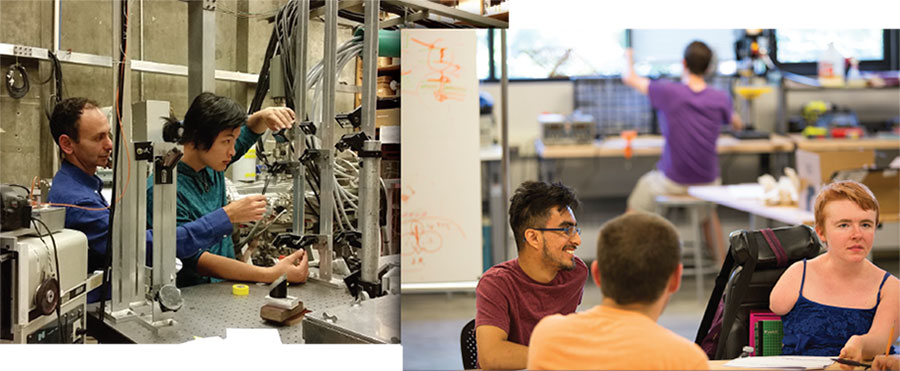
Researchers scaling up fusion hopes with DOE grant
Producing reliable fusion energy — the same process that powers the sun — has long been a holy grail of scientists. It releases no greenhouse gases, can be fueled by elements found in seawater and produces no long-lived nuclear waste.
The basic mechanism — getting two nuclei that want nothing to do with each other to fuse — is also difficult enough that there's no danger of a runaway chain reaction. In fact, scientists so far have struggled to create self-sustained controlled fusion reactions that produce more energy than they consume.
UW researchers have spent two decades developing a novel way to provide plasma stability that’s critical to achieving fusion. With a $5.3 million U.S. Department of Energy grant announced in May, they will partner with Lawrence Livermore National Laboratory to scale up their Sheared Flow Stabilized Z-Pinch device in the hopes of achieving a sustainable fusion reaction that might one day power homes or propel spaceships far beyond current limitations.
"Fusion energy is the ultimate energy source. It has the potential to be a very robust source without the reliability problems of wind and solar," said UW professor of aeronautics and astronautics Uri Shumlak, who collaborated with UW electrical engineering professor Brian Nelson to develop the device. "Our project will be a proof-of-principle experiment, and just showing that the sheared flow stabilized Z-pinch approach scales to higher powers is going to be really exciting."
They will need to increase the amount of energy that has been injected into the Z-pinches they’ve built to date by more than tenfold. The team plans to build a new Z-pinch device at the UW by summer of 2016 and run its first fusion tests in 2017.
Creating accessible makerspaces for people with disabilities
Inside the UW's CoMotion MakerSpace, students, faculty and staff use sewing machines to create anime convention costumes, 3-D print models for aeronautics research or make circuits for a custom-built amplifier.
Inspired by the DIY movement, these communal spaces enable a broader array of people to tinker, create, or prototype whatever invention they can dream up.
To ensure those spaces are truly inclusive, a team of UW researchers has released new guidelines aimed at ensuring makerspaces are accessible to people with disabilities.
The effort is part of a broader NSF-funded AccessEngineering initiative, which supports students with disabilities in pursuing engineering careers and promotes accessible design in engineering departments and courses.
"A lot of universities are creating more casual prototyping spaces as an alternative to a traditional machine shop," said AccessEngineering co-principal investigator Kat Steele, a UW assistant professor of mechanical engineering whose Human Ability & Engineering Lab focuses on developing tools for people with movement disorders. "This is a big growth area for engineering schools. We wanted to help develop best practices so as these new spaces are being created they can be accessible to the widest group possible."
The idea for makerspace guidelines arose, in part, because so many new computer-aided design tools are making it easier for people with disabilities to explore their creativity, prototype ideas and invent.
"It's really important to make sure these spaces are accessible precisely because these technologies are so enabling," Steele said. "Engineers are problem solvers, and the more diversity we have in the field the more problems we'll be able to solve, because everyone comes to that process with different life experiences and priorities."